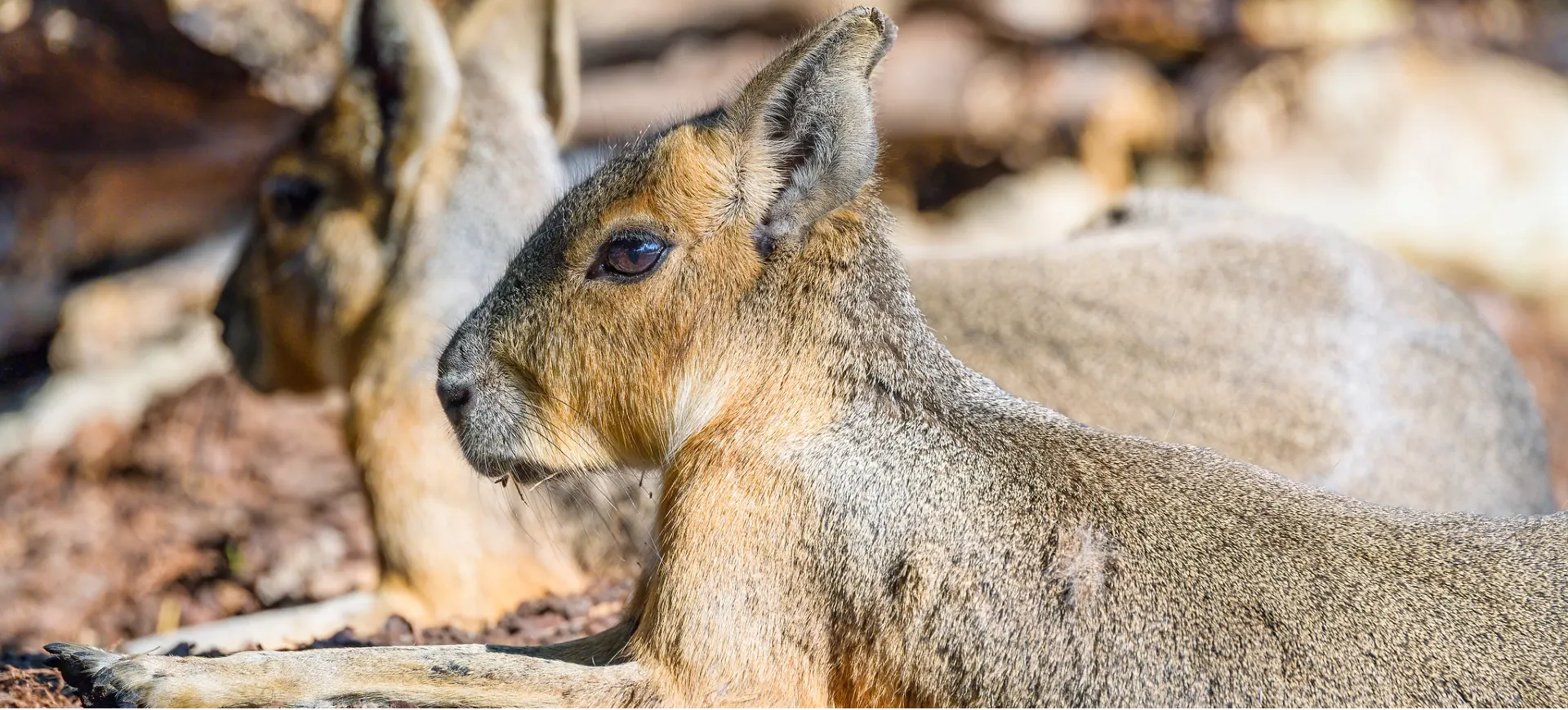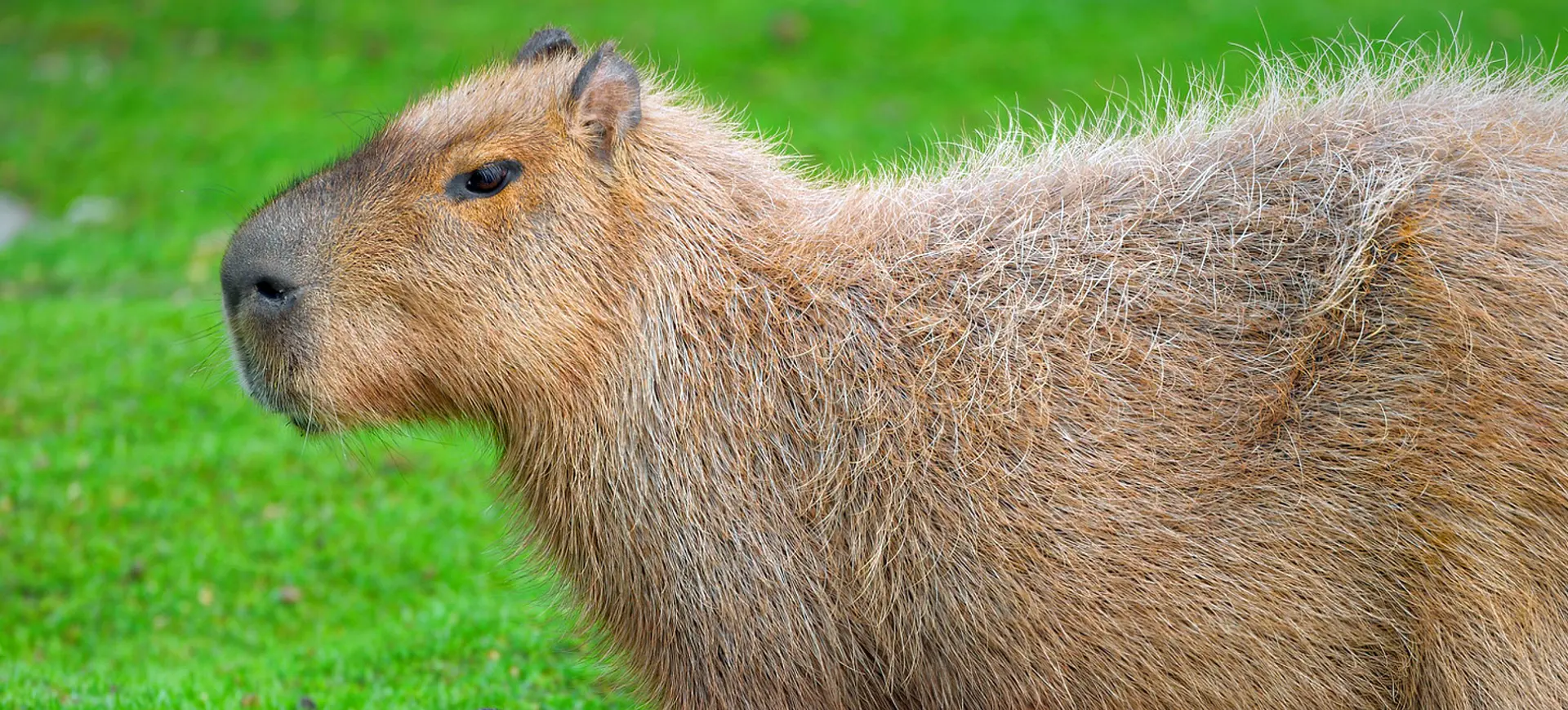Overview
Guinea pigs, scientifically known as Cavia porcellus, are small, friendly, and herbivorous rodents domesticated for thousands of years. Originating from the Andean regions of South America, these animals were not only kept for companionship but also played a significant role in local populations’ cultural and dietary practices. Guinea pigs have a robust, compact body, short limbs, and no tail, distinguishing them from other rodent species. They are known for their docile nature, vocalizations that express emotions and needs, and the ability to form strong bonds with their human caretakers.
Guinea pigs have various coat types and colors, resulting from centuries of selective breeding. These range from smooth and short-haired to long-haired varieties like the Peruvian, Silkie, and Texel, each with distinctive appearance and grooming needs. Their diet in captivity primarily consists of hay, fresh vegetables, and pellets, which is crucial for maintaining their digestive health and preventing diseases. By nature, social animals thrive in the company of other guinea pigs, as isolation can lead to stress and health issues.
Historically, guinea pigs were introduced to Europe in the 16th century, where they quickly became favored pets among the aristocracy and upper classes due to their exotic origin and unique appearance. Today, they are popular pets worldwide, appreciated for their friendly disposition, ease of care, and the wide range of vocalizations they use to communicate. In modern times, guinea pigs have also played important roles in scientific research, although ethical considerations have led to more regulations and alternative methods being developed.
RANGE
Current distribution:
Wild relatives of the domestic guinea pig are found across various countries in South America, including Peru, Bolivia, Colombia, Ecuador, and Venezuela. These populations tend to inhabit areas that offer abundant vegetation for food and cover for protection against predators. The geography of their habitat ranges from grasslands to mountainous regions, reflecting their adaptability to different environments.
Despite their widespread presence in domestic settings worldwide, the true wild populations of guinea pigs and their relatives are less commonly observed due to their elusive nature and the changes to their natural habitats. Efforts to monitor and preserve these wild populations are important for understanding the origins of the domestic guinea pig and ensuring their biodiversity conservation.
Physical Description:
Guinea pigs exhibit diverse physical appearances due to the extensive variety of breeds. For example, the American guinea pig breed has a short, smooth coat, while the Abyssinian is recognized for its unique rosettes or swirls of fur. The Peruvian guinea pig has a long, flowing coat that requires regular grooming to prevent matting. Their size can vary significantly across breeds, but they generally have a stout body, large head, and short limbs.
The typical guinea pig weighs between 1.5 to 2.6 lbs (700 to 1200 grams), with slight variations between males and females. They can grow to 8 to 10 inches (20 to 25 cm) from nose to tip of the back. There is no significant height measurement due to their short limbs and close-to-the-ground body structure. Their coat colors and patterns are incredibly varied, including white, black, cream, gold, and agouti, with many combining colors.

Lifespan: Captivity: ~8 Years

Weight: Male & Female: 1.5-2.6 lbs (700-1200g)

Length: Male & Female: 8-10 in (20-25 cm)

Top Speed: 9 mph (14.5 km/h)
Characteristic:
Native Habitat:
Guinea pigs were originally found in the Andean region of South America, where they lived in various habitats ranging from rocky areas to grasslands. They are highly adaptable animals domesticated several thousand years ago by local peoples. In their natural habitat, guinea pigs live in small groups and create burrows or use natural cover to protect themselves from predators. They are primarily active during dawn and dusk, feeding on various grasses and plants available in their environment.
Wild guinea pigs can still be found in South America, living in areas that closely resemble their ancestral habitats. However, the domesticated guinea pig has been bred in captivity for so long that it would struggle to survive if released into the wild. Conservation of their natural habitats in South America is crucial for the survival of wild populations and the overall biodiversity of the region.
Climate Zones:
Biomes:
WWF Biomes:
Biogeographical Realms:
Continents:
Countries:
Diet:
Diet & Feeding Habits:
Guinea pigs are herbivores with a diet in captivity that closely mimics their natural foraging behavior for grasses and other vegetation. They require a constant supply of hay, which provides the necessary fiber for their digestive systems and helps prevent dental issues by ensuring their continuously growing teeth are worn down. Fresh vegetables and fruits are essential for providing vitamins, especially vitamin C, as guinea pigs cannot synthesize them.
Commercial guinea pig pellets fortified with vitamin C are a crucial part of their diet, ensuring they receive all necessary nutrients. It’s important to monitor the amount of fruit and certain vegetables given to prevent obesity and other health issues. Guinea pigs also practice coprophagy, consuming certain fecal pellets to digest their food more thoroughly and extract essential nutrients. Clean, fresh water must always be available and delivered through a bottle to prevent contamination.
Mating Behavior:
Mating Description:
Guinea pigs reach sexual maturity young; females become fertile as early as 2 months old, and males at about 3 months. Despite this, it’s recommended to wait until they are slightly older before breeding to ensure the health of both the mother and offspring. They do not have a specific breeding season and are capable of reproducing year-round in captivity with the right conditions.
The gestation period for guinea pigs is relatively long for small rodents, lasting between 59 to 72 days. Females can give birth to litters ranging from 1 to 6 pups, with 3 being the average. Newborn guinea pigs are precocial, meaning they are born fully furred, with their eyes open, and can eat solid food within a few days, although they will also nurse from their mother. After birth, females can become pregnant again very quickly, so separating the males is essential if further breeding is not desired.
Reproduction Season:
Birth Type:
Pregnancy Duration:
Female Name:
Male Name:
Baby Name:
Social Structure Description:
Guinea pigs are inherently social animals, displaying a range of behaviors that indicate their need for companionship. In the wild, they live in small groups of a dominant male, several females, and their offspring. This social structure helps them to protect against predators, as they can alert each other to danger.
In captivity, it is important to house guinea pigs with at least one other compatible guinea pig to prevent loneliness and stress. They establish a hierarchy within their group, and introductions must be done carefully to ensure compatibility. Social interactions, including vocal communication, grooming, and playing, are vital for their well-being, demonstrating the complex social dynamics of these creatures.
Groups:
Conservation Status:
Population Trend:
As domestic animals, guinea pigs are bred and kept in various settings, from homes as pets to facilities for research purposes. Due to their status as domesticated animals, their population in captivity is not tracked in the same way as that of wild species. However, they are popular pets worldwide, known for their gentle nature and the ease of care they require.
Information is more sparse about their wild relatives, but efforts are made to monitor and protect these populations in their natural habitats. Conservation of wild guinea pigs involves preserving their natural habitats and ensuring sustainable practices in the regions where they are found. This is important not only for the guinea pigs but also for these areas’ overall ecosystem and biodiversity.
Population Threats:
The primary threats to wild guinea pig populations include habitat loss due to agricultural expansion, urbanization, and deforestation. These activities reduce the available habitat for wild guinea pigs, limiting their food sources and increasing their vulnerability to predators. Climate change also poses a long-term threat by altering their ecosystems, potentially leading to reduced suitable habitat.
In captivity, guinea pigs face different challenges, including the need for proper care, diet, and social interaction to ensure their well-being. Lack of awareness about their specific needs can lead to health issues. Efforts to educate potential pet owners about the requirements of guinea pig care are crucial for their welfare.
Conservation Efforts:
Conservation efforts for wild guinea pig populations include habitat preservation and restoration projects in South America. These efforts aim to protect and rehabilitate the natural environments where guinea pigs and other native species live. Education and community involvement are also key components, helping to promote sustainable practices and awareness of the importance of biodiversity.
Welfare organizations and veterinary professionals work to improve the standards of care for domesticated guinea pigs. This includes providing information on proper diet, housing, and social needs and advocating against practices that harm or exploit these animals. Adoption from shelters and rescues is promoted as a responsible way to obtain a pet guinea pig, reducing the demand for breeding and selling animals in inappropriate conditions.
Additional Resources:
Fun Facts
- Guinea pigs have four toes on their front feet and three on their back feet.
- Despite their name, guinea pigs are not from Guinea or related to pigs.
- They can make various sounds, including purring when happy, wheeking when excited or hungry, and chutting when exploring.
- Similar to humans, guinea pigs require a high amount of vitamin C and must obtain it from their diet.
- They are crepuscular, meaning they are most active during dawn and dusk.
- Guinea pigs’ teeth never stop growing throughout their life, requiring constant chewing to keep them at a manageable length.
- The longest-living guinea pig recorded by Guinness World Records was 14 years and 10.5 months old.
- They can jump small obstacles but are not good climbers.
- Guinea pigs practice “popcorning,” a behavior in which they jump into the air as a sign of happiness.
- In some cultures, guinea pigs are kept in the home as pets and as a traditional food source.









